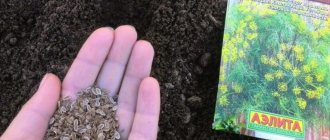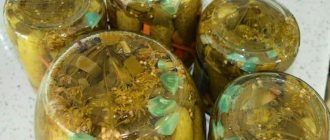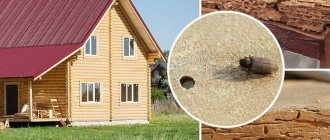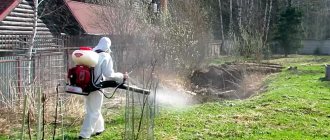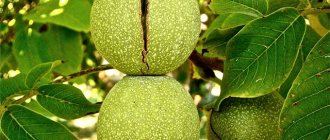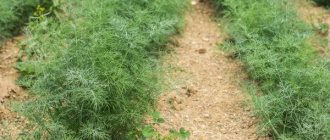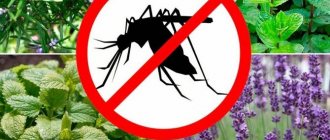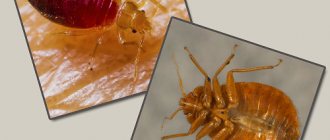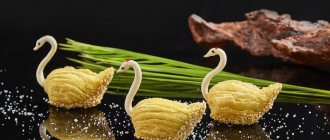Dill is an affordable and healthy spicy seasoning for dishes and preserves. An unpretentious annual plant found in garden plots of the northern and southern regions. But even familiar greens can grow poorly if you choose the wrong place and don’t know the rules of agricultural technology. Recommendations from experienced gardeners on how to plant dill will guarantee a rich harvest.
Leave 20-25 cm between the rows of dill
Choosing a location and landing rules
The herb came to Europe from the Mediterranean and Asia. The culture is unpretentious, cold-resistant, modern varieties have strong immunity. The plant must be planted in a well-lit area, away from flooded areas. The soil should be neutral and loose. Fertile land produces a rich harvest of greenery. The area for greenery is prepared in the fall. Autumn plowing (digging) and fertilization will be required. The best feeding will be compost and humus. Due to the slow germination of seeds, it is necessary to rid the bed of weeds that can clog the seedlings.
Information. Acidic soil slows down the germination of dill seeds and prevents the full absorption of nutrients.
The optimal time for planting aromatic grass is in April, but the seeds are sown during the summer for a regular harvest of greenery. Growing dill is possible in any conditions: open and closed ground, on a balcony or windowsill. Sowing begins before stable heat is established; the plant is able to withstand short-term frosts down to -3°C. In the spring, the soil is cultivated, and mineral fertilizers are applied during the same period.
The seeds of umbrella plants have a high percentage of essential oils that impede germination. Soaking speeds up the natural processes of the plant. In the place where dill is planted, furrows are prepared 1.5-2 cm deep and up to 5 cm wide. The soil is watered abundantly. Planting scheme - a gap of 20 cm is left between the crop rows. Seeds are sown in the furrows in a zigzag pattern. Material consumption is 1-2 g per square meter. m. It is correct to sprinkle the sowing on top with loose soil mixed with humus. The bed is mulched to retain moisture and prevent the formation of a hard crust on the soil surface.
Information. Usually dill is planted with seeds, but late-ripening bush varieties in the northern regions do not have time to produce mature fruits. In this case, farmers plant the spice using seedlings, having previously grown seedlings at home or in a greenhouse.
Useful tips for gardeners
To speed up the germination of sown dill, it is worth considering a number of important recommendations that will help achieve the desired result:
- Before spring sowing, you should first soak the seeds in warm water for 3–4 hours, changing the liquid used every hour (the air should not affect the bag with the seeds). This way you will contribute to a faster dissolution of the ethereal shell and speed up the germination of plants from seeds.
- The soil in the selected area should be soft and loose, so on clay substrates you will have to make the beds deeper and fill them with purchased loose substrate, sowing the seeds into it.
- In some cases, it is better to sow the seeds more densely and in the garden under trees. The experience of some gardeners proves that in such conditions seedlings appear faster than in an open garden bed.
- In areas with heavy soil, it is worth sowing dill in the spring, loosening the soil a few days before planting. Pre-winter sowing of crops in such places will not bring the desired result.
Regardless of the chosen variety of dill, you still need to take care of it, because this is the only way to get a bountiful harvest of greenery, and earlier or later by a week is not so important.
How to plant dill in open ground with seeds
Farmers love the spicy plant for its short growing season. Depending on the variety, greenery is cut after 35-45 days. In spring, you can sow dill along the furrows or scattered. In the second case, small oblong seeds are mixed with sand. Incorporation into the soil occurs with a rake. You cannot plant greenery in the shade of trees or outbuildings. Unlike parsley, dill is very sensitive to lack of light. Without sunlight, it becomes frail, yellowish, and painful.
Advice. In early spring and before winter in areas with high rainfall, sow dill in raised beds. In other cases, the crop is planted on a flat surface.
One of the mistakes novice gardeners make is to plant fragrant greens in acidic soil. The plant does not absorb minerals well and suffers from nutritional deficiency. Heavy clay soil is also best avoided. Soil with poor air permeability causes yellowing of crops. The secrets of growing a rich harvest are in the article “What to feed dill so that it grows better from year to year.” How to choose the right seeds for planting? Breeders have created many varieties of spices, differing in ripening time and rosette size. The culture is divided into 3 groups according to the onset of maturity:
- Early ripening varieties - green leaves reach commercial ripeness in 33-35 days. These include “Gribovsky”, “Aurora”.
- Mid-season varieties - harvesting begins after 35-40 days. The plants are distinguished by thick leaves and a strong aroma - “Dill”, “Borey”.
- Late-ripening varieties are grown for greens and do not produce umbrellas for a long time. Among the popular options are “Salut”, “Rime”, “Kibray”. These varieties belong to the bush forms.
When planting in spring and summer, the seeds undergo pre-sowing preparation; autumn and winter sowing is carried out with dry material. Moist soil (70-80%) and air temperature 18-20°C are optimal conditions for seed germination. When the temperature rises to 30-33°C, the development of sprouts stops. Dense sowing with friendly shoots requires mandatory thinning. Leave 8-10 cm between plants.
Why do problems arise?
Shoots are delayed
The emergence of seedlings may be delayed for several reasons:
- The seeds were stored for a long time, and as a result, they dried out.
- The seeds were not soaked before planting.
- Instead of an early variety of dill, a late one was planted.
- Insufficient heating of the soil when sowing seeds before winter.
Don't appear
- When the germination period has expired.
- If the germinated seeds were planted in dry soil, as a result of which the roots were damaged by the hard soil and died.
- In acidic soil, seeds cannot gain strength and quickly rot.
- Excessive watering or drying out of the soil.
Planting dill before winter
Early greens are the most delicious and aromatic; gardeners know that to get them, you need to sow dill in the fall. Seeds that have been stratified by winter frosts germinate faster. Plants are hardened, immunity and resistance to cold are increased. They receive the necessary moisture after massive snow melting. It is important to choose the right time for planting before winter. Early sowing in warm weather provokes germination of the crop. The cold will kill the seedlings; you will have to replant the greens in early spring.
The optimal timing depends on weather conditions in the region. Most often this is the beginning of November, in the middle zone and further north - October. You can navigate by the air temperature, when it is stable within 3-0°C during the day, and -1-2°C at night, they begin planting. First of all, prepare the beds. The area is dug up using a shovel and the weeds are removed. Fertilizer is applied, preferably humus or compost. Organic matter is beneficial to plants and safe for humans. The amount of fertilizer is 5 kg per square meter. m. The soil also receives mineral fertilizing in the form of superphosphates, wood ash, and urea.
Information. Before winter, dill seeds are not soaked; they are planted dry. There is no need to speed up germination.
Autumn sowing work has several features:
- The furrows in the beds are made about 4 cm deep (spring and summer sowings are 2 cm deep). A layer of soil will protect the dill from freezing in severe frosts and little snow.
- There is no need to moisten the soil. When planting in the warm season, the bed must be watered. Throughout the winter, it is necessary to prevent swelling and germination of the seeds, so choose dry weather and do not soak or water the dill.
- Number of seeds per sq. m area increases by 25-30%. The stock provides a sufficient number of seedlings in the event of partial loss of the crop due to unfavorable conditions. Light seeds are washed away during floods and lose their viability under the influence of abnormally low temperatures.
- After filling the furrows, the bed is mulched with peat, sawdust or humus, and agrofibre is used. An additional layer serves as shelter from the winter cold. This protection is especially important when there is little snow cover.
If frost hits early, is it possible to plant seeds? There is a way to sow dill directly on the surface of frozen soil. If snow falls, it is swept away from the designated area. Dry seeds are scattered on the ground. A layer of prepared soil or humus along with peat is poured on top. During the spring melting of snow, dill will go with water deep into the soil.
Soil preparation
Dill loves a lot of light and moist soil. Therefore, we choose the right place for the garden bed.
Important
Experienced agronomists have noticed that crops that grow in shaded areas absorb nitrates more strongly.
It will be better if in the fall we choose a place where we will plant the seeds and prepare the soil, then we can limit ourselves to simply loosening. Then we cut grooves 1-2 cm deep, pour water on them, sow the seeds, dig in with earth and tamp lightly with our hands.
If we maintain a distance of 1-2 cm between the seeds, we will get powerful bushes with lush greenery.
You should not water what has just been planted, otherwise the water will carry the seeds with it into the depths of the soil and then the sprouts will have to wait longer than usual.
If you cannot visit the site often, cover the bed with film and secure it with something heavy. Now neither the wind nor the birds are afraid of the seeds. But as soon as they germinate, we remove the shelter.
Important
The film will not protect against high temperatures. The plants underneath will burn. Therefore, it is best to cover it with spunbond.
How to sow dill so that it sprouts quickly
The seeds of the herb are rich in essential oils and organic acids. These characteristics make them a useful medicinal raw material and aromatic culinary seasoning. Essential oils prevent moisture from getting inside the fruit, slowing down the biological processes of sprout development. After planting, gardeners have to wait about three weeks for greenery to appear. What to do with slow-germinating seeds? The main tip is to partially wash out the oils. Complete information about the characteristics of the fruits of the spicy culture in the article “Versatile dill - beneficial properties of seeds in both medicine and cooking.”
Experienced farmers know several methods to speed up the germination of dill. Work with planting material begins a week before sowing. It must not only be soaked, but also disinfected before sowing in open ground. Fungal and viral diseases are in most cases transmitted through contaminated seed.
Information. The best germination rate is for seeds collected 1 year before sowing. If storage rules are violated, planting material loses its quality.
Methods for processing dill seeds for quick germination:
- Soaking in warm water. The simplest and most affordable option is to place the herb grains in warm water for 2-3 days. The liquid must be filtered or settled. These procedures will get rid of the chlorine found in tap water. The chemical element negatively affects plants. For convenience, the seeds are poured into a bag of gauze or cotton fabric. The water is changed 4-5 times a day. Each time a liquid is poured at a temperature of 20-22°C.
Advice. Hot water (55-60°C) has a more effective effect on essential oils. The time spent in it is limited to 2-3 minutes.
- Dill does not need to be kept in large amounts of water. After soaking and regularly changing the liquid during the day, it is placed in a wet napkin. The room where the seeds are swelling should be warm. As the napkin dries, moisten it with water.
- Immersion in a solution of growth stimulants. One of the popular ways to quickly germinate dill is to place it in a solution of biological stimulants “Epin”, “Zircon”, “Kornevin”. The drugs activate the development of the embryo and strengthen the plant’s immunity. They are diluted in water according to the manufacturer's instructions. Substances contained in stimulants accelerate root pecking.
- The ash solution serves as a replacement for biostimulants. Its action is based on the content of large amounts of microelements (especially potassium and calcium) in the ash. The substance is poured into hot water (2 tablespoons per 1 liter) and left for 2 days, stirred occasionally.
- Soaking in vodka before planting. Ethyl alcohol dissolves essential oil perfectly. Seed material treated with vodka (40% alcohol solution) demonstrates rapid germination. The procedure should not exceed 15 minutes. Alcohol not only dissolves the oil, but also has a disinfectant effect.
- One of the natural growth activators is aloe. Leaf juice diluted with water in a 1:1 ratio is used to soak the seeds of aromatic greens. The composition increases the immunity of the culture.
- Bubbling is the treatment of seeds with air. At home, the procedure requires a tall glass container and a compressor used for an aquarium. During processing, the material is saturated with oxygen and essential oils are washed out of it. Bubbling time is 12-18 hours. The temperature of the water used is 18-20°C. After the procedure, in favorable weather conditions, the seeds germinate within 3 days.
- Vernalization is a method that older generation farmers know about. The seeds are poured into a fabric bag and buried in the ground for a week.
Preparing seeds for sowing will be incomplete without dressing. Pathogenic microorganisms are destroyed by high temperature, alcohol, fungicide solution:
- Manganese permanganate crystals are dissolved in water until the liquid turns pink. Planting material is poured into a bag and immersed in the solution for 20-30 minutes. Then rinse with running water.
- Fungicide "Fundazol" is diluted in water according to the instructions. After processing, dill will be protected from many diseases.
- A replacement for the listed drugs is hydrogen peroxide; it has bactericidal properties. Keep the planting material in the solution for 10 minutes.
Information. Treatment of dill seeds with “Fundazol” eliminates the pathogens of powdery mildew, fusarium, and rot.
After treatment with stimulants and fungicides, green seeds are washed with clean water. Before planting, the material is thoroughly dried to restore flowability. It is scattered on paper in a thin layer, stirred periodically so that it dries evenly. Before planting, the bed is moistened abundantly. To maintain favorable conditions, you can plant the crop under film. The transparent fabric allows light to pass through but prevents moisture evaporation. With the appearance of the first green shoots, the shelter is removed.
Plant care
Caring for the crop is simple. Successful cultivation includes watering, loosening the soil, killing weeds, and controlling pests and diseases.
Watering
Dill needs watering. If you plant plants early in the spring, then at the beginning of the growing season they are content with soil moisture, then it becomes insufficient.
The crop does not tolerate dry soil, growth slows down, and normal leaves do not develop. In hot weather, daily watering and spraying are the main agrotechnical cultivation techniques. With excess moisture and nitrogen, the plant is susceptible to fungal diseases.
Top dressing
Green crops are not fed with mineral fertilizers. Organic matter, superphosphate, and potassium salt are added to the beds in the fall.
Poorly developing plants indicate a lack of nutrition. Nettle infusion is used as a top dressing:
- a bucket of nettle greens is filled with 10 liters of water;
- cover with film;
- insist on the sun for 5 days; dilute 1 liter of infusion in a bucket of water.
When can you plant dill?
Gardeners sow herbs in open ground several times a year, harvesting green leaves twice. The first sowing occurs in early spring. At the end of April, after the snow has melted, you can plant the crop in the prepared beds. In the fall they are filled with organic and mineral fertilizers. Planting time depends on the region; in the northern regions, the crop is sown in May.
Seeds and shoots are resistant to cold. The germination process starts at soil temperatures of 3-5°C. Optimal indicators for crop development are 16-18°C; for flowering and fruit ripening, 20°C is required. In addition to warmth and moisture, greenery requires long daylight hours. In April it is at least 12 hours.
Advice. When sowing in early spring, you should not germinate the seeds; washing is enough. As a result of return frosts, the sprouts may be damaged and the germination rate will decrease.
The second time planting occurs in August, when some of the vegetables have been removed from the beds and free space has appeared. It is recommended to choose varieties with dense foliage intended for greens: “Richelieu”, “Grenadier”, “Ozornik”, “Salute”, “Umbrella”. Summer planting requires processing of the seed material. There is little time left before the first cold weather, during which the seeds must germinate and the seedlings must reach marketable ripeness.
A common way to influence planting material is to place it in hot water (55-60°) for 2-3 minutes. After this, soak for 2 days with regular changes of liquid. The procedure will wash out some of the essential oils, allowing moisture to quickly penetrate the seed. Dill is sown in furrows, abundantly watered. It is recommended to sprinkle the top not with soil, but with humus or its mixture with peat and sand. The first days after planting, no watering is required; then, depending on weather conditions, the beds are irrigated 1-2 times a week.
For more information, see the article “Is it possible to provide yourself with fresh greens at the end of summer? We plant dill in August.”
In the southern regions, re-sowing periods are wider; the last greens can be sown in September. The plant is not afraid of cold weather, even if night frosts occur, the rosette will not die. The consequence of frost can be a change in the color of the leaves. Experienced farmers have green leaves in their diet throughout the warm period. Their secret is regular sowing of the crop. Starting from the first spring planting, a new batch of dill is sown every 3 weeks. When one greenery enters the flowering phase, the next planting gains green mass. This conveyor does not stop until the fall.
After the end of the warm season, in October or November, gardeners prepare to sow dill before winter. Such planting will ensure the ripening of the first greenery 1-2 weeks earlier than the earliest spring sowing. The seeds overwinter in the soil without negative consequences. For a plant that reproduces in nature by self-sowing, this is a natural process.
What healthy and diseased sprouts look like: description and photo
Healthy dill seedlings are bright green, rather fluffy bushes. The leaves are even and immediately straighten after smoothing. If the sprout is sick, its leaves are very weak, drooping, and have individual yellow branches. Also, the cause of the onset of the disease may be darkening of the stem near the root.
In the photo you can see the seedlings of the plant.
How many days does it take for dill to sprout after sowing?
Herb seeds are considered difficult to germinate. After planting in open ground, they sprout within 15-20 days. The waiting period for the first green shoots depends on several factors:
- Moderate soil moisture can speed up the process. In dry weather and without watering, germination is delayed. Seeds absorb large amounts of moisture (up to 250% at a temperature of 12-14°C). This ability is explained by the presence of proteins in the seed, and on its surface there are protrusions and ribs.
- The germination time is affected by the temperature of the surrounding air and ground. In warm weather, greens from seeds germinate faster than in early spring, when the thermometer rises slightly above zero. Under experimental conditions at the same humidity, it was noted that at +5°C the culture germinated for 24 days, and at +20°C – 4 days. In open ground, when the soil warms up to +12°C, seeds germinate in 10-14 days.
- The timing is affected by the chemical composition of the soil, the level of acidity, and the structure of the soil. Neutral, loose soil is the best option for growing greens. It provides unobstructed air exchange.
- The planting depth should not exceed 2 cm, otherwise it will be difficult for the delicate sprout to move out.
Information. Regular watering and warmth are two main factors that accelerate the appearance of the first leaves.
How much greenery grows in the garden depends on the variety. Early ripening dill produces inflorescences in a month and soon dries up. Late-ripening varieties bear fruit by the end of summer, producing green leaves throughout the entire period. Soaking and processing seeds accelerate biochemical processes. Shoots appear in 7-10 days. Seed germination is quite low, only 55-60% of planting material of the first category sprouts. Seeds with a germination rate of 35% or more are considered high-quality. Therefore, dill is sown in large quantities, approximately 1 g per 1 square meter. m.
Is the shelf life and germination period of seeds the same thing?
- The shelf life is the period of time after which the seeds become unusable.
- The germination period of seeds is the period of time, how many years the seeds are capable of germination. Seed germination is their biological ability to sprout under normal germination conditions. Serves to determine the norm and suitability for sowing. The germination of seeds depends on the technology of their cultivation, harvesting methods and storage conditions.
Thus, the shelf life and germination period are parameters of the suitability of seeds for use.
In accordance with clause 6.1. Order of the Ministry of Agriculture of the Russian Federation dated December 12, 2022 No. 622 “On approval of the procedure for the sale and transportation of batches of seeds of agricultural plants”, the year of the seed harvest must be indicated on the packaging .
In order to purchase high-quality seeds, you need to know their germination period. It has been established empirically and is listed in various reference books.
Important!
The germination period of dill seeds, subject to the required storage conditions, is 2-3 years. One of the signs of germination, according to gardeners, is the smell. If it disappears, then the seeds will not sprout.
Dill neighbors in the garden
When planting vegetables in the garden, it is important to consider their compatibility. Properly chosen neighbors in the garden have a positive influence on each other. Crops with poor compatibility are inhibited in development and compete for nutrients. Where to plant dill next to and why? To prevent plants from interfering with each other, they must belong to different families. In this case, they do not have common diseases and pests that quickly spread throughout the beds and destroy the crop.
One of the rules is that high plantings should not obscure low ones. You should also take into account the need and possibility of nutrient consumption by crops. The best spice neighbors in the garden:
- cabbage;
- cucumbers;
- beans;
- onion;
- strawberry;
- fennel.
Dill umbrellas attract insects to pollinate flowering vegetables, as well as ladybugs that destroy aphids. When planting greenery among strawberries, the aromatic grass repels slugs. Cucumbers in the diffused shade of narrow leaves will hide from the summer heat, and fennel will have an improved taste.
Can I plant next to tomatoes? No, such proximity should be avoided. Plants actively consume the same nutrients from the soil, and their productivity decreases. It is not advisable to place carrots and basil next to spicy crops.
After which you can plant dill
Gardeners sow annual crops every year. When choosing a location, you have to take into account the level of light and humidity. In addition, we must not forget about our predecessors. The chances of a good harvest increase with cucumbers, potatoes, cabbage, legumes and beets.
Advice. If there were a lot of aphids in the garden, plant onions. The vegetable repels the pest. Next year you can safely plant dill and other crops without fear of insects.
What to plant after dill
Crop rotation is an important part of farming; following recommendations for alternating garden crops will help prevent soil depletion and the spread of diseases. Fragrant dill is less demanding on the environment and is planted after most vegetables. The plant is content with a small amount of microelements, so the area does not require special restoration. What to plant after the greens next year?
Experienced gardeners have noticed that in place of herbs, melons and melons grow well - zucchini, pumpkins, and squash. Representatives of the nightshade family, tomatoes and eggplants also do well, taking the place of greens. It is recommended to place other vegetables:
- peas;
- pepper;
- potato.
What does the appearance of greenery say?
By the appearance of the greenery and how it gains growth, you can understand whether everything is fine with our plant. For example:
- if the dill turns yellow, it means there is not enough nitrogen, which is contained in urea or mullein, and it may also be cold or lacking space;
- if it quickly fades into color, it means there is little moisture;
- slow growth indicates lack of nutrients or low temperature;
- red color indicates that the soil is too acidic or has a lot of potassium.
